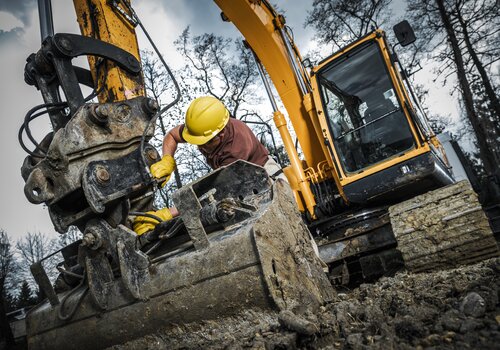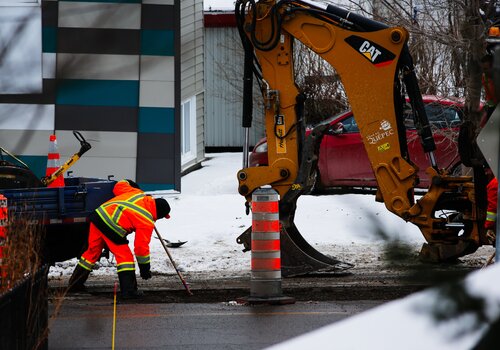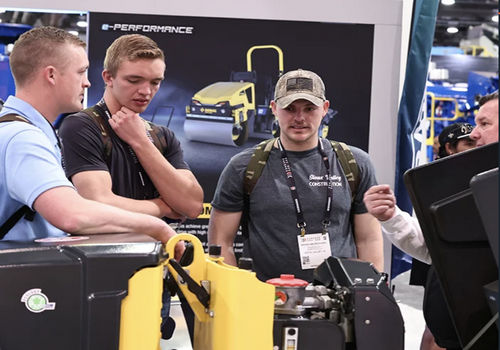The ability to view all of your construction equipment fleet data in one place holds tremendous value. Yet, a recent survey from Construction Equipment magazine shows just 14% of respondents are integrating data using an ISO telematics standard while an additional 16% are using a third-party service. Nearly four in 10 respondents (37%) reported that they monitored their data through individual supplier dashboards and 33% relied on their dealer to monitor the data.
It’s neither efficient nor effective for fleet managers to be managing data in multiple platforms or not at all, especially since OEM and independent solutions are increasingly brand agnostic. Through the telematics API or application programming interface, which complies with the ISO 15143-3 (AEMP 2.0) standard, manufacturers can provide operational data about machines on the jobsite to owners, third-party fleet management software providers, other OEMs, and dealers.
According to Mayank Sharma, Head of Product at Teletrac Navman, an independent fleet management solution provider, one of the challenges to adoption is cost. In addition to recurring subscription fees for software, there are also costs for connectivity and GPS tracking devices to make older equipment or attachments visible in the system. Subcontractors pose another challenge. “It's hard for a customer to tell the subcontractor to use telematics,” says Sharma. “Most of the time, they won’t.”
Equipment availability, safety, savings, and productivity drive usage
Initially, the telematic data being shared by OEMs was limited to location and utilization, but it has expanded to include maintenance codes, productivity, safety, and cost data. This adds more value.
According to Sharma, the key driver for Teletrac Navman customers is still the awareness and availability of assets. However, there is a growing interest in accessing safety data such as truck speed within a jobsite. “Safety use cases are becoming more prominent.”
“The power of data allows customers to manage their fleets and job sites with more insights than ever before,” says Steve Dionne, Digital Program Manager for Caterpillar. “Increasing production and saving costs where possible are critical to maximizing on-the-job performance, and Cat’s’ VisionLink allows users to do that all in one place.”
“Our customers’ bottom line is what drives everything,” says Craig McGinnis, Senior Business Solutions Manager. for Komatsu’s Smart Quarry Team. “Today more than ever, decisions are driven by data.”
McGinnis says that payload counts are one of the data points that customers who use Komatsu’s Smart Construction Fleet app are most excited about. With the truck size and average payload info, they can calculate how many tons of material is moved per day. “They like to see where the truck is idling or not moving,” he adds.
“VisionLink customers can track key data points like material types and tonnage moved, fuel burn/costs, machine hours, and high idle times,” says Dionne. “They can pull payload data for analysis and compare productivity between shifts. All this enables them to make data-driven decisions, rather than guesses or assumptions, like determining optimum distances between cycle segments or redeploying fleet based on hourly utilization updates.”
Ease of Use and Intelligence
Caterpillar and Komatsu have each recently introduced new brand-agnostic fleet management tools with a focus on ease of use.
“VisionLink’s new and improved user interface is truly easy to use and understand,” says Dionne. “Users can jump into the platform and hit the ground running with little to no training or instruction.”
Komatsu’s new Smart Construction Fleet app enables users to easily manage mixed fleet load counts on their mobile devices. “Load the app, select the jobsite and machines, and you're off running,” says McGinnis. GPS tracking devices the size of a cell phone connect a variety of vehicles including construction equipment, on-road trucks, and off-road vehicles. “You get the same data from each monitored vehicle, regardless of brand.”
My Komatsu remains the platform where users can manage telematics and maintenance data for Komatsu equipment as well as other OEMs through API data.
The Teletrac Navman TN360 brings artificial intelligence into the mobile asset and fleet management market. Through the Insights module, customers can examine trends, compare their data to others in the industry, and gather intelligence based on the data. The Teletrac Navman solution includes hardware, installation, software and connectivity, service, and support. “It’s a full-package solution,” says Sharma.
ROI
Users want to understand the ROI of their fleet management investment. “A lot of our conversation with customers is centered around return on investment,” says Sharma. “They want to know how quickly they can pay for the system with savings from reduced fuel consumption or reduced safety incidents.”
Another key question for end users is whether the telematics system can provide the intelligence needed to manage the business effectively and help translate that intelligence into ROI.
“For the Komatsu Smart Fleet App, I think the ROI is pretty quick,” says McGinnis. “If you add one or two truckloads a month you will make that money back.”
Dionne says VisionLink makes it possible to improve owning and operating costs by monitoring idle time to reduce fuel costs, reducing downtime and improving uptime. “It’s difficult to pinpoint specific ROIs, because of the variety of customers and industries using the system,” he says.
After incorporating VisionLink Productivity into their jobsite at Schwinger Quarry, the company was able to lower fuel consumption and reduce CO2 emissions by an estimated 150 tons. Managing Director of Schwinger, Dr. Kristian Daub, said, “In the past, we thought we knew…now we know. We can make decisions based on data instead of gut feeling.”
Support
Sharma believes it’s important for end-users to consider support when selecting their telematic software partner. “When things go wrong, when the customer needs support, when the customer wants to move this device from one to the other, when the customer wants to add new devices, having a robust support structure is quite important,” he says. “There are a lot of companies that offer similar products, but what they don't have is a robust support structure.” Adopting telematics is a long-term commitment and only partners who can support customers through the journey of adoption and use are successful.
There is no shortage of brand-agnostic fleet management solutions available. On the one hand, you have third-party providers such as Teletrac Navman, whose core competency is fleet management software, while on the other hand, you have OEMs such as Caterpillar and Komatsu, both with a long history of successfully supporting their construction customers.
The choice is yours. But one thing is certain. There’s no better time to turn your fleet management data into actionable insights with a brand-agnostic, all-in-one solution.
About the solutions
Read Next
How to Manage Your Fleet More Efficiently
Equipment Fleet Management Best Practices: Top Contractors Share Successes and Struggles












